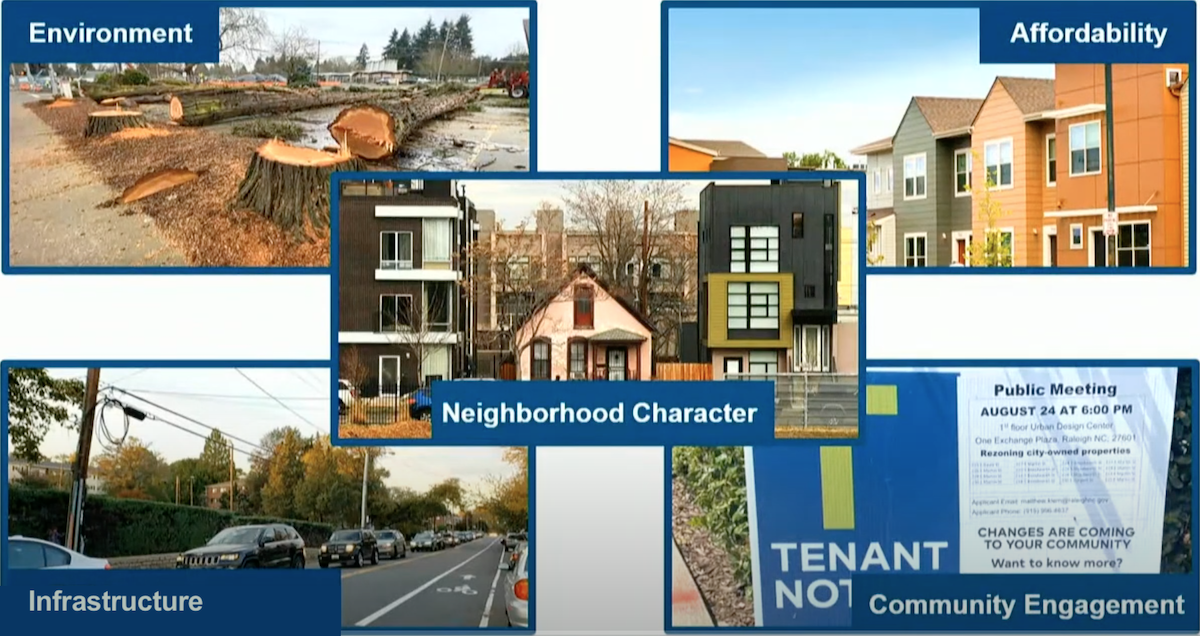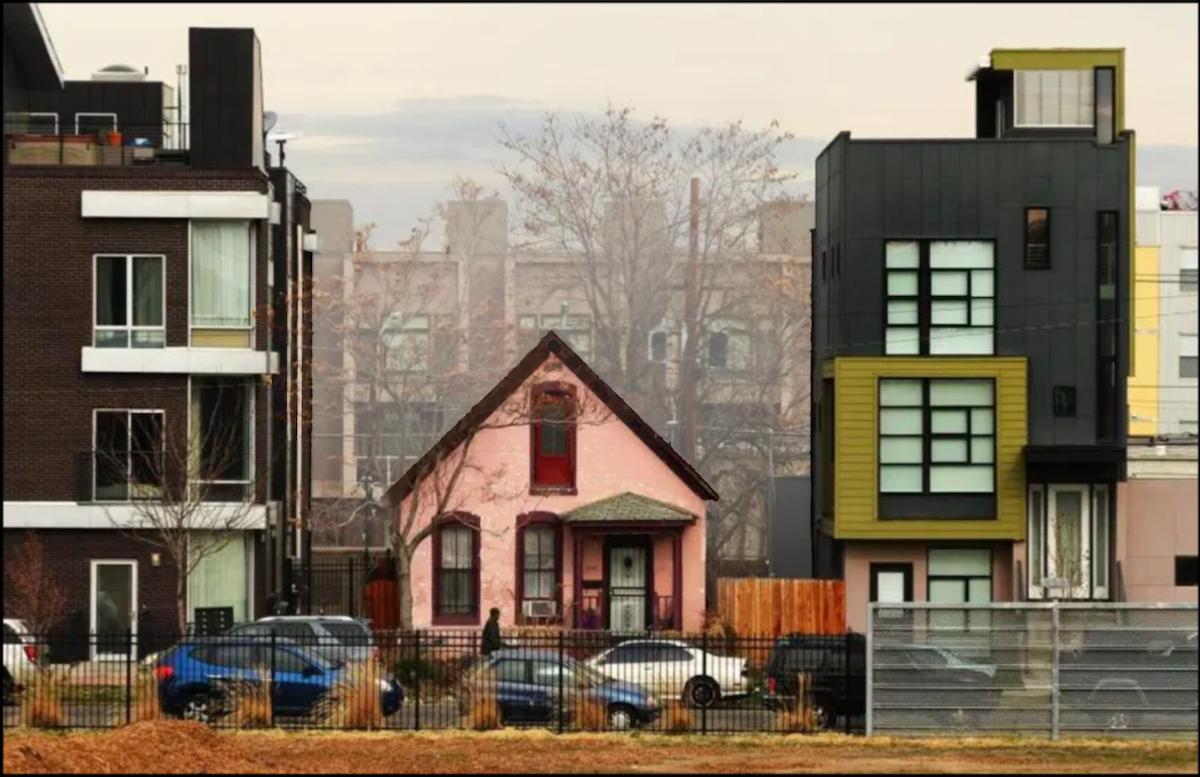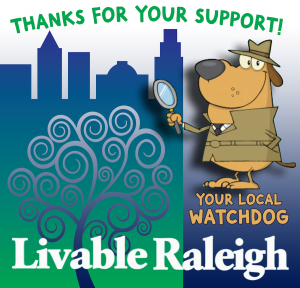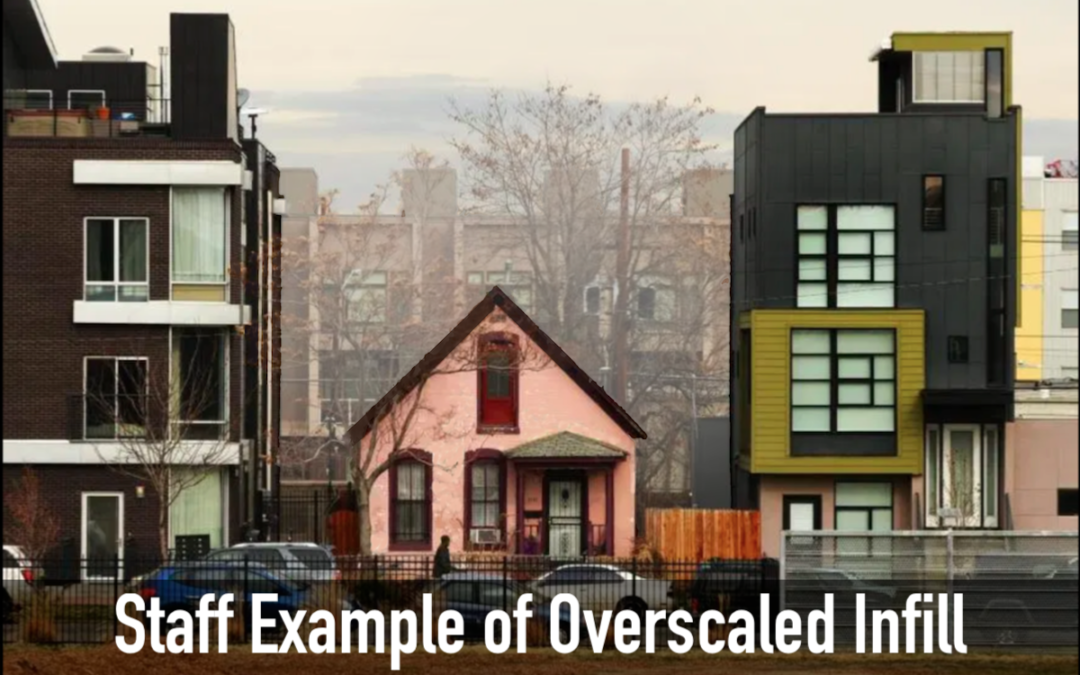At their June 18 meeting, Council weighed five negative impacts of Raleigh‘s Missing Middle rules on the Environment, Affordability, Neighborhood Character, Infrastructure, and Community Engagement.

Staff slide of five Missing Middle impacts

Staff photo illustrating the impact of overscaled infill
APA – American Planning Association – Measuring Community Character
“While there are many potential ways to measure the urban form of a neighborhood or town, a small number of these measurements seem to have a disproportionate effect on how people perceive community character.
These key measures are the heights and widths of buildings, the distances between the fronts of buildings and the edges of streets, the distances between buildings on the same side of the street, the distances between facing buildings, the distances between parallel and intersecting streets, and the variation in those heights, widths, and distances across the community (or a defined subarea of the community).”
COMP PLAN – Key Policy LU 7.1 “…Zoning and design standards should ensure that the height, mass, and scale of development within nodes respects the integrity and character of surrounding residential areas and does not unreasonably impact them.”
Livable Raleigh Editorial Team
If you appreciate the kind of reporting we bring to you
|
Please donate $10 or $20, Thanks for supporting |
 |

